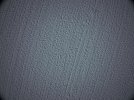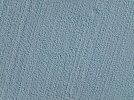I don't think there are any changes on the files by PS, since the file was just opened. But here are two files directly from memory card.
Download...
Download...
I still wonder how this just slipped through their QA and how they judge this amount as small or within tolerance.
But these are no normal lens abbarations, like vignetting / fringing or distortion (which are correctable in post).Sure, there is most probably a spread in this early state of production, like it always was with DJI drones. Think of the massive purple flaring in early Mavic Pros (1), diffraction with first M2P camera modules, etc. This wil be ironed out with time, with new hardware revisions. The Inspire 1 for example had 4 revisions. As another example, I have two M2P, one from 2018, the other from late 2019, both are very different in diffraction at different f-stops.
But those color vignetting / fringing / distortion issues with the Mavic 3 are not there because of a lack in DJI's QA. They are basically inherent to the system. Take a look at regular 1", M43, APSC, Full Frame cameras - the larger the sensor, the bigger and heavier the lenses are. Cunsumers today are demanding bigger sensors, but they usually come at the cost of more complex lenses. Not possible on this drone (or any other in such a small form factor). To full-fill the demand of the market, DJI has to take these compromises, and so does the customer. So it's completely debatable, if a M43 sensor in such a small drone without the possibility to get a proper lens is really a good idea to buy, besides its better sensitivity in low light situations.
That’s technical not possible. That are 2 lenses with each it’s own sensor.Have any of you thought this colour shifting in white balance might be a problem with some light scattering that is coming in through the top lens?
Perhaps taping the upper zoom lens with tape will answer this question.
I haven't taken the clear filter off to check, but it could be possible if there was any gap between the filter and the lens housing. It's actually an interesting thought to me.That’s technical not possible. That are 2 lenses with each it’s own sensor.
Why would they design a gap between those 2 cameras? Makes no sense to me.I haven't taken the clear filter off to check, but it could be possible if there was any gap between the filter and the lens housing. It's actually an interesting thought to me.



So the conclusion is that it is a lottery to get a properly working unit. My fourth Mavic 3 should arrive on Tuesday and if it still suffers from this color shift then I'm done with Mavic 3 until production quality is on a better level.It seems like DJI got it right with the current firmware, if your camera doesn't suffer from production spread.
From today with current firmware one Top Down shot of a snow-covered field with overcast sky, so perfectly even lighting conditions.
(For best comparison, click on one image on your Mac/PC and switch between them with your cursor keys)
- The first image is the result from a conversion with Raw Therapee, showing the true quality of the lens withoutany modifications. It show the usual vignetting from these kind of compact lenses (see Post #224).
- The second image got a Flat Field correction with Raw Therapee only, nothing else. No more color vignetting.
- The third image was converted with Lightroom, with Lightrooms standard application of Opcodes embedded in the DNG. No further settings applied.
You will notice, that besides an automatic boost in exposure, contrast and saturation it gets a distortion correction with a crop too. The resolution of the image container stays at 5272 × 3948, so all images out of Lightroom are slightly upscaled.
View attachment 140414View attachment 140415View attachment 140416
Regarding video, I got comparable results with D-Log Clips from the same Mavic 3: No vignetting or color shifts.
No.
Also the example from the last post. Just take the image (in best case the dng and not the manipulated jpg) and set dehaze, etc. on a high value. You will see almost the same picture as on the examples bevor.
I don't get the point here.
Nobody would dehaze or work in any other way with such an image before applying any corrections.
Like I wrote several times, this sort of vignetting isn't unusal for lenses in compact camera modules. Throw RAW images of a Mavic 2 Pro, Air 2S or even from a smartphone in RAW Therapee, and you see similar results. Yes, it's worse on the Mavic 3, but because of it's bigger sensor, which would need a much much bigger lens than the other drones with their smaller sensors, to be comparable in optical regards.
To sum it up, unevenly color smearing or spots are problems, probably because of a decentered lens.
We use essential cookies to make this site work, and optional cookies to enhance your experience.


